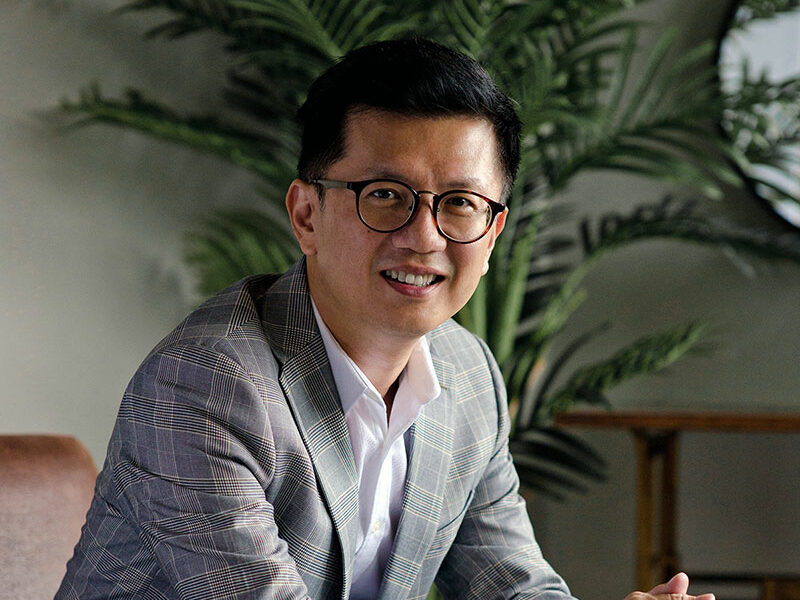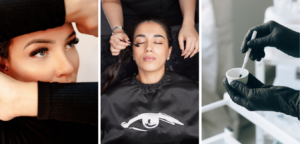Aesthetics
Ultimate Guide To Gynecomastia: Symptoms, Causes, Treatments, Common Questions in Singapore
Many things in life are best enjoyed shirtless, but gynecomastia gets in the way…
By: Farah Khan / October 13, 2022

Many things in life are best enjoyed shirtless; swimming, sunbathing by the beach and hanging out with your friends at an evening barbeque. The enjoyment of these fun and worry-free times are often interrupted or even eliminated altogether by depleted confidence levels due to enlarged male breasts.
Gynecomastia, or what is socially referred to as ‘man boobs’, is a common male breast disorder (overdeveloped or enlarged glandular breast tissue) that can occur at any age and affect one or both breasts. If you consider this treatment, here are the details that you need to know about gynecomastia.
Disclaimer: The Beauty Insider platform does not promote or support any specific treatment. The information provided in this article is for educational purposes only, and we strongly advise all readers to thoroughly research and consult with a doctor accredited by the Ministry of Health before undergoing any aesthetic or medical procedures.
Contents
- Causes Of Gynecomastia
- Discover Gynecomastia – A Man’s Secret Pain
- Q: Can Gynecomastia Go Away On Its Own?
- Q: Can Diet And Exercise Get Rid Of Gynecomastia?
- Q: Can Gynecomastia Surgery Get Rid Of Man Boobs?
- Q: Gynecomastia vs Fat: How To Tell The Difference Between Gynecomastia And Pseudogynecomastia?
- Q: Can Gynecomastia Be Treated with Liposuction Alone?
- Q: Is Gynecomastia A Rare Medical Condition?
- Q: Is Gynecomastia A Sign Of Breast Cancer?
- Q: Can Gynecomastia Can Be Cured With Steroid Intake?
- Q: Can Gynecomastia Be Prevented?
- Q: How Do I Know If I Have Gynecomastia?
- Q: Am I a good candidate for gynecomastia surgery?
- Q: I suspect that my teenage son is suffering from gynecomastia. How do I help?
- Gynecomastia Surgery By Dr Ivan Puah, Medical Director Of Amaris B. Clinic
- Choosing A Gynecomastia Doctor In Singapore
- What To Do Before Your Gynecomastia Surgery in Singapore?
- What To Do After Your Gynecomastia Surgery?
- Amaris B. Clinic Singapore
Causes Of Gynecomastia
Gynecomastia can have four root causes: physiological, pharmacological, pathological, or idiopathic.
Patients may develop physiological gynecomastia while they are young, adolescents, or elderly. Gynecomastia can be due to pharmacological reasons, such as anabolic steroids, anti-ulcer, or heart medications.
Very rarely, certain hormone-producing tumours, such as testicular or brain tumours, can cause gynecomastia. The underlying reason must be addressed to treat this group of patients.
Gynecomastia is most frequently caused by idiopathic conditions, which are conditions for which there is no established aetiology.
Discover Gynecomastia – A Man’s Secret Pain
“Fifteen years ago, gynecomastia was not a medical condition that received much attention in the medical industry. It was a hidden topic and pain among those bothered by this problem. In fact, many men are unaware that gynecomastia surgery is a permanent and safe option to effectively correct it,” says Dr Ivan Puah. He has received dedicated training in gynecomastia surgery in the United States of America.
Dr Ivan Puah, with over 15 years of body sculpting experience, has been at the forefront of treating gynecomastia and performing liposuction. He is the creator of the MDC-Sculpt®️ Lipo technique and 360° Glandular Tissue Dissection (360°GTD®), two proprietary surgical approaches.
“Gynecomastia affects men not just physically, causing swelling, soreness, pain but more, from the psychological aspect. Many men I have seen suffered depression and anxiety, with extremely low self-esteem. They tried dieting and exercising, creams, fat freezing, and low-energy laser but could still not correct the enlarged male breasts. Gynecomastia surgery is the only medically proven solution,” explains Dr Ivan Puah.
So what does gynecomastia surgery entail? Is it gory and risky?
Let Dr Ivan Puah explain and dissect many other curious questions you may have.
Q: Can Gynecomastia Go Away On Its Own?
A: This misunderstanding frequently occurs because teenage boys can develop gynecomastia throughout puberty, which goes away in two years or less. In cases where gynecomastia persists for over a year, it will likely become permanent.
Q: Can Diet And Exercise Get Rid Of Gynecomastia?
A: While a healthy diet and regular exercise can help an individual stay fit and healthy, the excess chest fat and glandular tissues will not respond to them. Most of the patients I have seen over the years resorted to exercise and diet to get rid of it. They saw their weight drop, but the glands and chest fat remained prominent. To complicate the issue further, some lost a massive amount of weight over a brief period and ended up with loose skin and stretch marks besides the man boobs.
Q: Can Gynecomastia Surgery Get Rid Of Man Boobs?
A: Yes. To date, gynecomastia surgery is still the gold standard for treating man boobs. It effectively removes abnormal hypertrophic breast tissues and excess chest fat to improve the chest’s appearance and shape.
Q: Gynecomastia vs Fat: How To Tell The Difference Between Gynecomastia And Pseudogynecomastia?
A: In True Gynecomastia, breast enlargement is due to only the proliferation of glandular tissue. In Psuedogynecomastia, fat accumulation is the leading cause, although appearance-wise, both gynecomastia and pseudogynecomastia look similar. Pseudogynecomastia is actually rarer than true gynecomastia. In actual fact, most men suffer from mixed gynecomastia – a combination of glandular and fat tissues.
Q: Can Gynecomastia Be Treated with Liposuction Alone?
A: No. Liposuction treatment will not work on those suffering from true gynecomastia, as surgical excision is the primary approach. Pseudogynecomastia can be treated with liposuction as it comprises mainly fat. For mixed gynecomastia, both liposuction and surgical excision will be involved.
Q: Is Gynecomastia A Rare Medical Condition?
A: No. Gynecomastia is a common breast lesion that accounts for over 65 percent of male breast disorders and affects young adolescents and adults.
Q: Is Gynecomastia A Sign Of Breast Cancer?
A: While it is always a concern when a mass is present, the reality is that male breast cancer accounts for only 0.2 percent of all malignancies in males. However, a biopsy can be carried out to ascertain the nature of the glandular tissue. Do speak to your doctor about this option.
Q: Can Gynecomastia Can Be Cured With Steroid Intake?
A: It’s a common misconception that testosterone-containing steroids can treat gynecomastia. This myth results from the idea that males develop breasts due to too much oestrogen in their bodies. Therefore, the solution is to increase testosterone levels to balance excess oestrogen. In actuality, this would exacerbate the situation.
Q: Can Gynecomastia Be Prevented?
A: Unfortunately, physiological gynecomastia occurs most frequently during male hormonal changes, which cannot be prevented. In other cases, avoiding excessive alcohol consumption, steroid use and illegal drug are recommended to reduce the risks of developing gynecomastia.
Q: How Do I Know If I Have Gynecomastia?
A: You can first carry out a self-evaluation test. It is probably gynecomastia if you feel a firm mound of breast tissue around the areola area, which causes sensitivity, soreness or pain when pressure is applied. You may also feel pain and discomfort due to the distention and tightness from the hypertrophied breast. It can happen to both breasts or just one.
Remember that you can only be 100% sure by getting diagnosed through a physical examination done by a medical professional; of course, a doctor who is experienced in treating gynecomastia cases is the best choice for this assessment. During the clinical evaluation, your doctor can determine the severity of your condition and your gynecomastia grade and propose a suitable approach for you.
Q: Am I a good candidate for gynecomastia surgery?
A: Candidates suitable for male breast reduction are physically and emotionally healthy and stable, with good skin retraction ability. The best way to determine whether you are suitable for gynecomastia surgery is to schedule a consultation with a reputable and experienced gynecomastia doctor.
Q: I suspect that my teenage son is suffering from gynecomastia. How do I help?
A: Teenagers suffering from gynecomastia tend to be highly self-aware of their bodies. He may act grumpy, self-conscious and stop engaging in social activities altogether. As the appearance of enlarged breasts causes embarrassment for him, you may notice that he will dress up in baggy tops and avoid removing his shirt in front of you or other family members.
Gynecomastia in male teenagers can reach a C- or D-cup size. Large nipple-areola complexes (puffy nipples) might look deformed and feminine. Swelling, discomfort and pain are common symptoms to look out for.
If you find that your teenage son is suffering from this condition, sit down and talk with him and tell him there is a surgical option available to treat this issue. Schedule an appointment for him to have a proper assessment with a doctor.
Gynecomastia Surgery By Dr Ivan Puah, Medical Director Of Amaris B. Clinic

Treating gynecomastia is more than just removing excess breast lesions and fat tissue.
“The objective of gynecomastia surgery is to seek histological clarification of the suspicious breast lesion and to reconstruct the male chest contour. It is a challenging and complex process which needs the performing doctor to have a good understanding of the patient’s unique muscle, skeletal and fat anatomy and use the appropriate surgical technique to carry out the correction,” explains Dr Ivan Puah.
The patient’s age, grade, presence of the breast development and consistency will determine the indications for surgery.
Male breast reduction surgery, like any other surgical procedure, has its potential risks involved, although it is generally safe. It is crucial to thoroughly disclose any health concerns you may have with your doctor. Some risks may include reaction to tape or sutures, haematoma, and changes in sensation in the treatment area.
Gynecomastia surgery, performed by Dr Ivan Puah, is an improvised and modernised approach. Using his proprietary surgical approach, the 360° Glandular Tissue Dissection (360°GTD®), to do a clean excision of the excess glands and the MDC-Sculpt®️ Lipo technique to remove unwanted chest fat, the surgery is carried out under local anaesthesia in an accredited Day Surgery. This means the patient is not subjected to the risks of general anaesthesia and will not require an overnight stay. Although some soreness and discomfort are expected as part of the post-surgical healing process, most of his patients have described the discomfort level as akin to overtraining.
Unlike the traditional gynecomastia surgical approach, drainage tubing is not required post-operatively, dramatically reducing the chances of infection and ugly scars. Scars are strategically placed neatly and well hidden, with the risks of haematoma (bleeding) reduced to the bare minimum with Dr Puah’s proprietary surgical approaches. Most importantly, the end result is aesthetically pleasing, contoured and defined.
Most of Dr Puah’s patients generally recover within days and return to their daily activities with minimal disruption, such as returning to work. Water activities, strenuous chest presses, and gym work will need to take a back seat for 4 to 6 weeks. Dr Puah and his medical team will monitor your healing during follow-up appointments.
Choosing A Gynecomastia Doctor In Singapore
When it comes to something that might have you considering surgery, the most critical factor is choosing the right doctor to help you. In Singapore, there are essential factors to consider before getting an appointment with a gynecomastia doctor.
First of all, ensure that the doctor is liposuction accredited. Check out reviews of the doctors that you are going to shortlist for a visit. During the consultation, don’t be shy to ask the doctors about their experience in the procedure they are suggesting to you. An excellent way to know their experience is to see the various types of gynecomastia cases the doctor has performed throughout his career. This will help you understand the doctor’s background and give you an idea of what it would be like after the procedure as well.
Be sure to discuss your needs and goals during the consultation. Your comfort and safety are important, and a doctor who believes so is definitely the right choice. So, don’t hesitate to let them know of any concerns or expectations. It will only serve to benefit you in the future.
Last but not least, the doctor should have a team of experienced medical personnel to provide timely advice, guidance and assurance for you from the moment you step into the clinic.
What To Do Before Your Gynecomastia Surgery in Singapore?
In preparing for gynecomastia surgery, your doctor may perform or request that you get lab testing or a medical evaluation. Throughout your consultation, you must be open and honest with your doctor, as the success of the surgery depends highly on your candour.
Your lifestyle, such as medication intake and smoking habits, may affect the steps you need to take before the surgery. Your doctor might ask you to take certain medications, adjust your current medication intake, and stop unhealthy habits such as drinking and smoking.
What To Do After Your Gynecomastia Surgery?
You can do several things after your surgery to ensure a speedy and safe recovery process after a successful surgery.
- Follow the post-op advice dispensed by the doctor and his medical team.
- Don on compression garments 24/7 for 6 to 8 weeks. This will significantly help to compress post-surgical swelling and aid in skin retraction.
- Do not skip any post-op appointments that are required by your doctor.
- Rest and do not exert yourself post-operatively.
- Avoid consuming alcohol and smoking for at least two weeks before and after surgery.
- Take care of your eating habits, and be sure to eat a light and healthy diet with plenty of water.
Amaris B. Clinic Singapore
Established in 2004, Amaris B. Clinic takes pride in giving their patients utmost priority. Apart from gynecomastia surgery and liposuction, it also provides a wide array of medical aesthetic treatments, including Ultherapy, wrinkle-smoothing injection, dermal fillers, acne treatment, and weight and sports recovery programme.
With integrity and ethics committed to each patient, Amaris B. Clinic Singapore always puts patients’ well-being in mind. Dr Ivan Puah and his medical team prioritise patient care, safety and results.
Find out more about Amaris B. Clinic here.
















